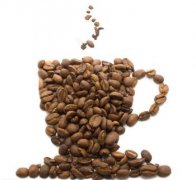Basic knowledge of Coffee Culture Coffee Culture of Viennese

Coffee is something Viennese people are proud of. Viennese even compare it with music and waltz, calling it "Vienna Three Treasures," which shows the love between Viennese and coffee. Some people say that Vienna is "five steps and one coffee," which may be a poet's exaggeration, but Vienna has a large number of cafes. From coffee booths on street corners for people to stand and drink, coffee shops near universities where students gather, to rich and luxurious cafes near theaters and imperial cities, there are at least dozens of cafes, some of which open at 6:30 a.m. and close at 2 a.m. Therefore, it is not an exaggeration to say that the air of "Music Capital" is not only flowing with the rhythm of music, but also filled with the fragrance of coffee.
Viennese coffee drinking dates back to the 17th century. At that time, in many Islamic countries, large and small cities, cafes abound, coffee has become an indispensable part of people's lives. But in Europe, people didn't know what it was. In 1683, the Turks attacked Vienna for the second time. At that time, Austrian Emperor Obod I signed a military alliance with Polish King Augustus II. The Austrian and Polish allied forces crushed the Turkish attack. The fleeing Turkish army had abandoned large quantities of weapons, ammunition, and hundreds of large bags of mysterious brown beans on the battlefield around Vienna's walls, and the victorious Viennese did not know what to do with them. As it happened, a Polish spy who had infiltrated the Turkish army, Korshizki, had tasted in Constantinople the strong black drink brewed from this roasted bean, which the Turks called "Kahve," or coffee. As a reward, the Pole received all the coffee captured on the battlefield and opened Vienna's first café. Even today, there are still many cafes that claim to be the first Polish cafe to attract customers. But in the beginning, coffee shop business is not good, Viennese still prefer tea. Later, the businessman changed the recipe and added milk to his coffee, which worked surprisingly well and became popular in the 1680s. They call it "Melange." Even today, coffee is still Vienna's most popular drink, despite its variety.
Coffee drinking has become a part of life in Vienna, and for the price of a cup of coffee one can meet friends in a cafe, play chess, read books, write books, read newspapers (usually newspapers from many countries), or watch TV in an obscure corner in a laid-back atmosphere. Some coffee shops have their own type of clientele-countries, writers, or politicians; most coffee shops have a diverse clientele. Vienna's most famous café is the Central Cafe, located in the city centre. Before World War I, it was a gathering place for famous poets, playwrights, artists, musicians and diplomats. Some people say that it is the cradle of many Austrian poems, plays and novels, which may be exaggerated, but Mozart, Beethoven, Schubert, Strauss and his son, the "Waltz Dynasty", are all frequent visitors here. Today, the Central Cafe is thriving, but no matter how crowded it is, guests can stay as long as they want, a century-old tradition of Viennese cafes. There are also many high-profile cafes in Vienna, which are always closely related to some famous people in the past or present. Viennese like to tell visitors which cafés artists and writers meet frequently and which cafés politicians meet journalists. Viennese coffee comes in many varieties, from black coffee to coffee with milk in various colors, each with its own characteristics, suitable for different tastes, and each with its own name. So, walking into a Viennese cafe and simply asking for a cup of coffee can overwhelm the waiter, because there are at least 40 varieties of coffee. If you don't know much about coffee and want to experience the unique atmosphere of Viennese cafes, order the "Melange" mentioned earlier, this strong coffee is completely Viennese and has a long aftertaste. Whichever coffee you order, you get a glass of water at the same time-for no reason other than that the water in Vienna is particularly cool and delicious. But if the waiter brings the guest a second glass of water, it means "you've been here too long."
Viennese have a sweet tooth, and they often like to order a cup of coffee with a nice dessert. Vienna has a lot of desserts, but for coffee people like the Gugelhupf, a hollow omelet typical of Vienna. The availability of newspapers, pictorials and magazines for readers to read is a cultural feature of Vienna cafes, which also has historical roots. It is said that before coffee was widely accepted, many cafes in Vienna had to offer free newspapers to attract customers, because newspapers were expensive at that time, and a newspaper cost twice as much as a cup of coffee. Of course, this entertaining role of the newspaper no longer exists today, but it has survived and constitutes the cultural taste of the Viennese café.
Important Notice :
前街咖啡 FrontStreet Coffee has moved to new addredd:
FrontStreet Coffee Address: 315,Donghua East Road,GuangZhou
Tel:020 38364473
- Prev

The History and Culture of Coffee the History of Cuban Coffee
In 1748, coffee was introduced into Cuba from Dominica, and Cuba began to grow coffee ever since. With fertile land, humid climate and abundant Rain Water, Cuba can be called a natural treasure land for coffee cultivation. The suitable natural conditions provide a favorable natural environment for the growth of coffee trees, and coffee is well planted and developed here. In Cuba, the cultivation of coffee is regulated by the state. Cuba is the most
- Next

Japanese Coffee Culture Asian Coffee Culture
The first coffee spread to Japan was Nagasaki in the Yuanlu period. And people officially accepted it from the Meiji era. Now let's take a look at the coffee history of Japan. At first, the Japanese were not used to the coffee shop opening one after another in Western Europe, when the literature and art of coffee culture were in full bloom, while Japan was in the strict lock-up policy of the Edo era.
Related
- How did the Salvadoran coffee industry develop in Central America?
- What exactly does the golden cup extraction of coffee mean?
- The Origin of Coffee flower
- [2023 Starbucks World Earth Day] there are more meaningful things besides free Starbucks coffee!
- What kind of coffee is there in Spain? 9 Flavors of Spanish Coffee
- Aromatic African coffee| Kenya's coffee culture and historical production area
- Liberica Coffee Bean knowledge: the characteristics of Liberian Coffee beans of the three original species of Coffee beans
- The origin and formula of Spanish latte introduces the taste characteristics of Bombon coffee in Valencia, Spain.
- How to adjust the solution of over-extracted coffee
- What is the tasting period of coffee beans? What is the period of coffee and beans? How should coffee wake up and raise beans?

